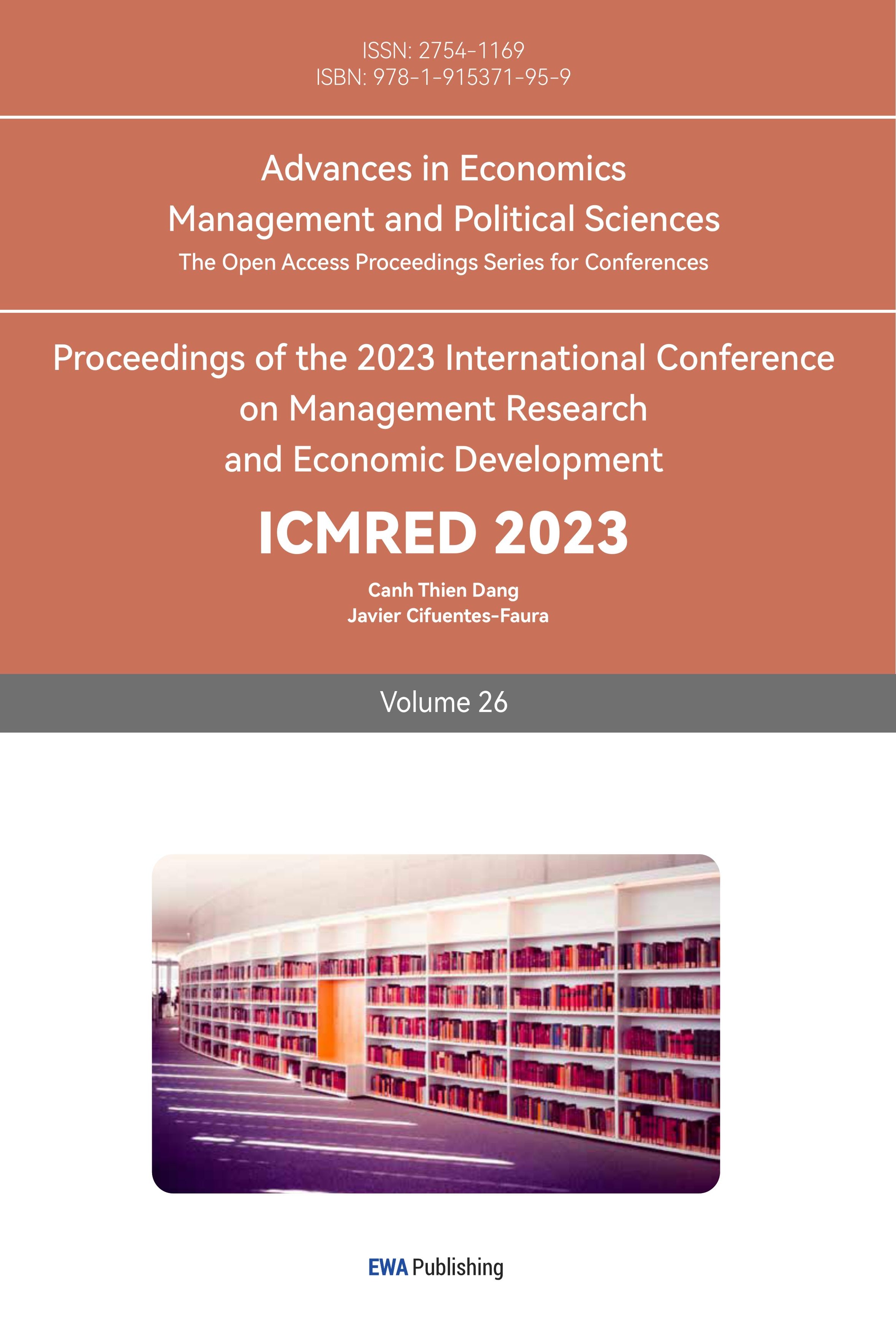References
[1]. Zhu Yeming, Wang Jitao. Limitation analysis of capital asset pricing model [J]. Gansu Finance, 2005(05):20-22.
[2]. Chen lihong, song yawen. empirical study on capital asset pricing model [J]. cooperative economy and technology, 2022 (03): 71-73. doi: 10.13665/j.cnki.hzjykj.2022.03.029.
[3]. Guermat, Cherif. “Yes, the CAPM Is Testable.”Journal of Banking &Finance,vol.46,2014,pp.31–42,https://doi.org/10.1016/j.jbankfin.2014.05.001.
[4]. Zhang Zhaoguo, zhang yi, Zheng Baohong. Richard Rolle's Contribution to Financial Economics [J]. Economics Trends, 2014(02):99-105.
[5]. Khoon, Cung Huck, et al. “CAPM or APT? A Comparison of Two Asset Pricing Models for Malaysia.” Malaysian Management Journal, 2020, https://doi.org/10.32890/mmj.3.2.1999.8564.
[6]. Wen Yiming, Yin Zongcheng. An empirical study on the excess stock return of listed companies in pharmaceutical and biological industries in China based on Fama-French three-factor model [J]. China-Arab Science and Technology Forum (in Chinese and English), 2022(09):87-90.
[7]. Lianna. research on the multi-factor stock selection model based on investor sentiment index [D]. Changchun university of technology, 2022. doi: 10.7805/d.cnki.gccgy.20080.00000000000605
[8]. Yang Zunhan. Test of CAPM model and Fama-French three-factor model in China's A-share market [J]. economic research guide, 2022(08):117-119.
[9]. Li Fuwen. Testing asset pricing model with Hong Kong stock data [J]. Times Finance, 2020(02):74-75+82.
[10]. KEIICHI KUBOTA1 and HITOSHI TAKEHARA, “Financial Sector Risk and the Stock Returns: Evidence from Tokyo Stock Exchange Firms”, Asia-Pacifific Financial Markets 10: 1–28, 2003.
Cite this article
Zou,H. (2023). A Literature Review on the Capital Asset Pricing Model in Finance. Advances in Economics, Management and Political Sciences,26,56-60.
Data availability
The datasets used and/or analyzed during the current study will be available from the authors upon reasonable request.
Disclaimer/Publisher's Note
The statements, opinions and data contained in all publications are solely those of the individual author(s) and contributor(s) and not of EWA Publishing and/or the editor(s). EWA Publishing and/or the editor(s) disclaim responsibility for any injury to people or property resulting from any ideas, methods, instructions or products referred to in the content.
About volume
Volume title: Proceedings of the 2023 International Conference on Management Research and Economic Development
© 2024 by the author(s). Licensee EWA Publishing, Oxford, UK. This article is an open access article distributed under the terms and
conditions of the Creative Commons Attribution (CC BY) license. Authors who
publish this series agree to the following terms:
1. Authors retain copyright and grant the series right of first publication with the work simultaneously licensed under a Creative Commons
Attribution License that allows others to share the work with an acknowledgment of the work's authorship and initial publication in this
series.
2. Authors are able to enter into separate, additional contractual arrangements for the non-exclusive distribution of the series's published
version of the work (e.g., post it to an institutional repository or publish it in a book), with an acknowledgment of its initial
publication in this series.
3. Authors are permitted and encouraged to post their work online (e.g., in institutional repositories or on their website) prior to and
during the submission process, as it can lead to productive exchanges, as well as earlier and greater citation of published work (See
Open access policy for details).
References
[1]. Zhu Yeming, Wang Jitao. Limitation analysis of capital asset pricing model [J]. Gansu Finance, 2005(05):20-22.
[2]. Chen lihong, song yawen. empirical study on capital asset pricing model [J]. cooperative economy and technology, 2022 (03): 71-73. doi: 10.13665/j.cnki.hzjykj.2022.03.029.
[3]. Guermat, Cherif. “Yes, the CAPM Is Testable.”Journal of Banking &Finance,vol.46,2014,pp.31–42,https://doi.org/10.1016/j.jbankfin.2014.05.001.
[4]. Zhang Zhaoguo, zhang yi, Zheng Baohong. Richard Rolle's Contribution to Financial Economics [J]. Economics Trends, 2014(02):99-105.
[5]. Khoon, Cung Huck, et al. “CAPM or APT? A Comparison of Two Asset Pricing Models for Malaysia.” Malaysian Management Journal, 2020, https://doi.org/10.32890/mmj.3.2.1999.8564.
[6]. Wen Yiming, Yin Zongcheng. An empirical study on the excess stock return of listed companies in pharmaceutical and biological industries in China based on Fama-French three-factor model [J]. China-Arab Science and Technology Forum (in Chinese and English), 2022(09):87-90.
[7]. Lianna. research on the multi-factor stock selection model based on investor sentiment index [D]. Changchun university of technology, 2022. doi: 10.7805/d.cnki.gccgy.20080.00000000000605
[8]. Yang Zunhan. Test of CAPM model and Fama-French three-factor model in China's A-share market [J]. economic research guide, 2022(08):117-119.
[9]. Li Fuwen. Testing asset pricing model with Hong Kong stock data [J]. Times Finance, 2020(02):74-75+82.
[10]. KEIICHI KUBOTA1 and HITOSHI TAKEHARA, “Financial Sector Risk and the Stock Returns: Evidence from Tokyo Stock Exchange Firms”, Asia-Pacifific Financial Markets 10: 1–28, 2003.









